MBA. Hellen Ruiz Hidalgo
Strategic Communicator
Foreign Trade Observatory (OCEX)
Vice-Rectory for Research - Distance Learning State University (UNED)
Introduction. The New Silk Road, the popular name for the colossal international policy and program of cooperation of the People's Republic of China (PRC), embodies an already irreversible paradigm: the unstoppable shift of the center of gravity of the world economy. At the same time that it represents the geopolitical corollary of the growing economic weight of the Asian Dragon, it also responds, and to the same extent, to China's own internal economic and political necessities, having reached a point of economic development, financial accumulation and increased capabilities that cannot be secured within the confines of its own borders, no matter how large they may be, they are still limited if they are not to remain in the middle-income trap.
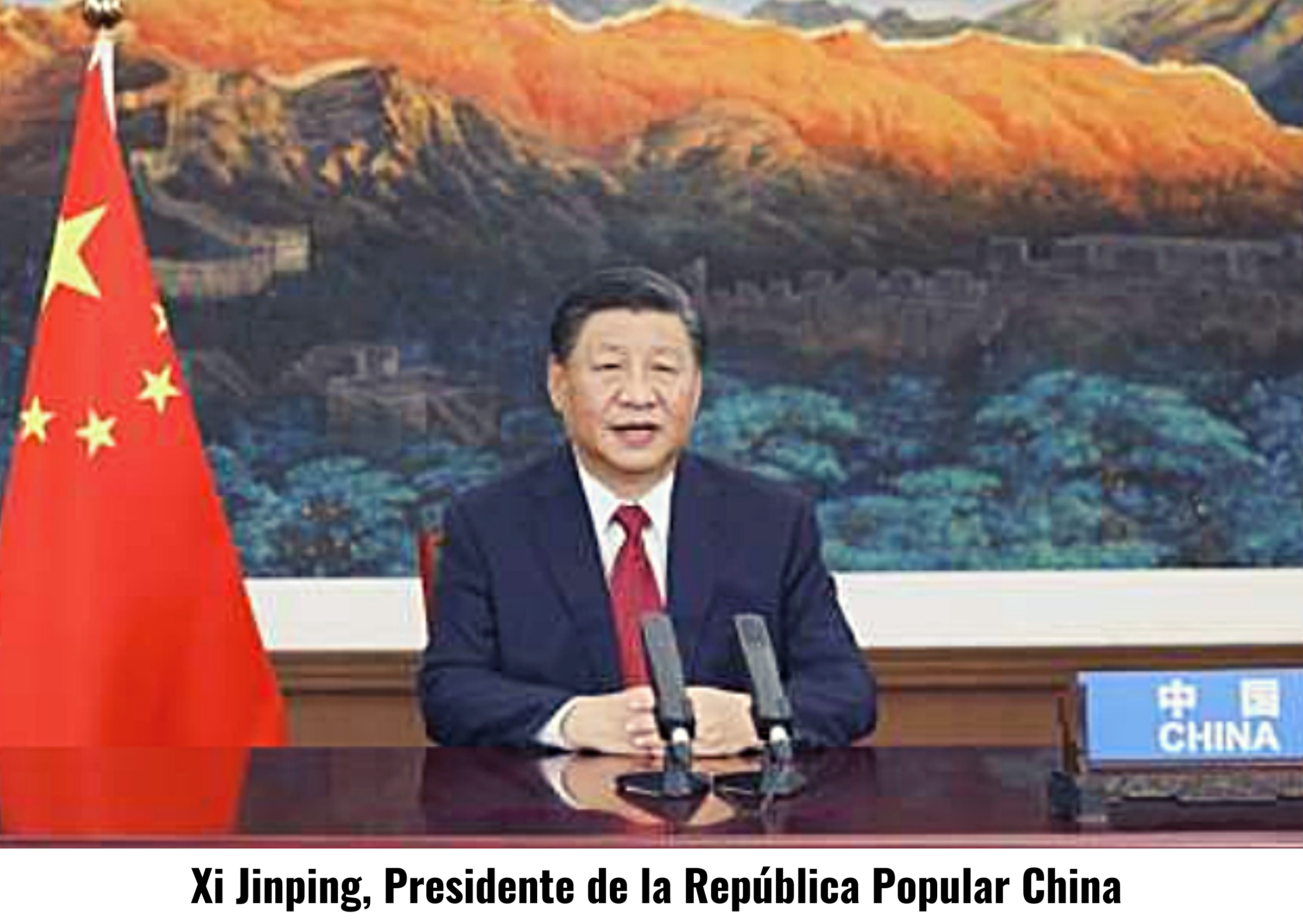 It is open to all countries and international organizations that would like to join, with no ideological or political strings attached and on the principle of mutual benefit. It serves both economic and security needs: to find a new engine of growth and to prevent military confrontation prophylactically. As an instrument of closer ties with the international network, it facilitates China's transition to the status of a highly developed country. By making China an articulated part of the world's development and economy, it serves as a preventive factor of confrontations, which would be historically disruptive for everyone.
It is open to all countries and international organizations that would like to join, with no ideological or political strings attached and on the principle of mutual benefit. It serves both economic and security needs: to find a new engine of growth and to prevent military confrontation prophylactically. As an instrument of closer ties with the international network, it facilitates China's transition to the status of a highly developed country. By making China an articulated part of the world's development and economy, it serves as a preventive factor of confrontations, which would be historically disruptive for everyone.
Therefore, the New Silk Road must be understood within the dynamics of China's national growth and the need to address, under different terms, the interdependence of its peaceful development with the economic future of the world. It is a continuity in a higher stage of the "reform and opening up" process launched by Deng Xiaoping in 1978. As a new engine of growth, it responds to national economic needs. As a new network of international relations, it improves its geopolitical security conditions.
The New Silk Road is a public and diplomatic policy design that signals China's double transition, on the one hand, from a middle-income country to the status of an economically advanced country and, on the other, from a country geopolitically vulnerable to the "Thucydides trap" to its geopolitical consolidation deterring military threats, thanks to an architecture of alliances that establishes for China a new positioning in the international balance.
The middle-income trap in China. A middle-income trap is generally defined as a situation in which a country reaches a certain level of income thanks to the advantages obtained from its previous situation, but then it does not manage to continue growing towards becoming a high-income country. It remains stuck at a middle-income level (defined by the World Bank as between US$10,000 and US$15,000 per capita). At present, while China's GDP is only slightly lower than that of the United States, its GDP per capita is not. In China it is around US$12.5 thousand dollars, while in the United States it has been over US$60 thousand dollars for many years.
Often the average income trap is a product of the country's own success, when the increase in wages that accompanied its development causes it to lose its competitive advantage regarding the attraction of investments and also regarding the export of manufactured products. The trap consists of not being able to get out of the production model that resulted in that level of income by not being able to reinvent itself, to assume new productive or commercial paradigms that allow the development of new capabilities to compete in the high value-added market.
Attracted by the combination of abundant labor and low wage costs, and in search of efficiency, international investments led, since 1978, to a sustained rise in China with annual GDP growth rates, many years above 10%. In 1989, U.S. GDP was 16 times that of China. On the eve of the announcement of the New Silk Road initiative in 2013, US GDP was only 1.3 times higher. In 30 years, China went from a GDP of 150 billion to one of 17 trillion. However, since 2012, China's GDP has ceased to grow above 7.9%. That relative stagnation of its growth placed China in the middle-income economic trap.
The slowdown in the pace of growth since 2012 has forced China to restructure its economy. The global financial crisis confirmed that the labor-intensive, export-oriented development model followed since the 1980s had reached its apex and the middle-income trap needed to be overcome by looking again at its structural problems: Low domestic market in relation to its excess industrial and financial capacities, low national competitiveness in high-tech products, regional imbalance between the development of coastal and inland provinces, low advancement and disconnection in provinces bordering Asia and without access to the sea.
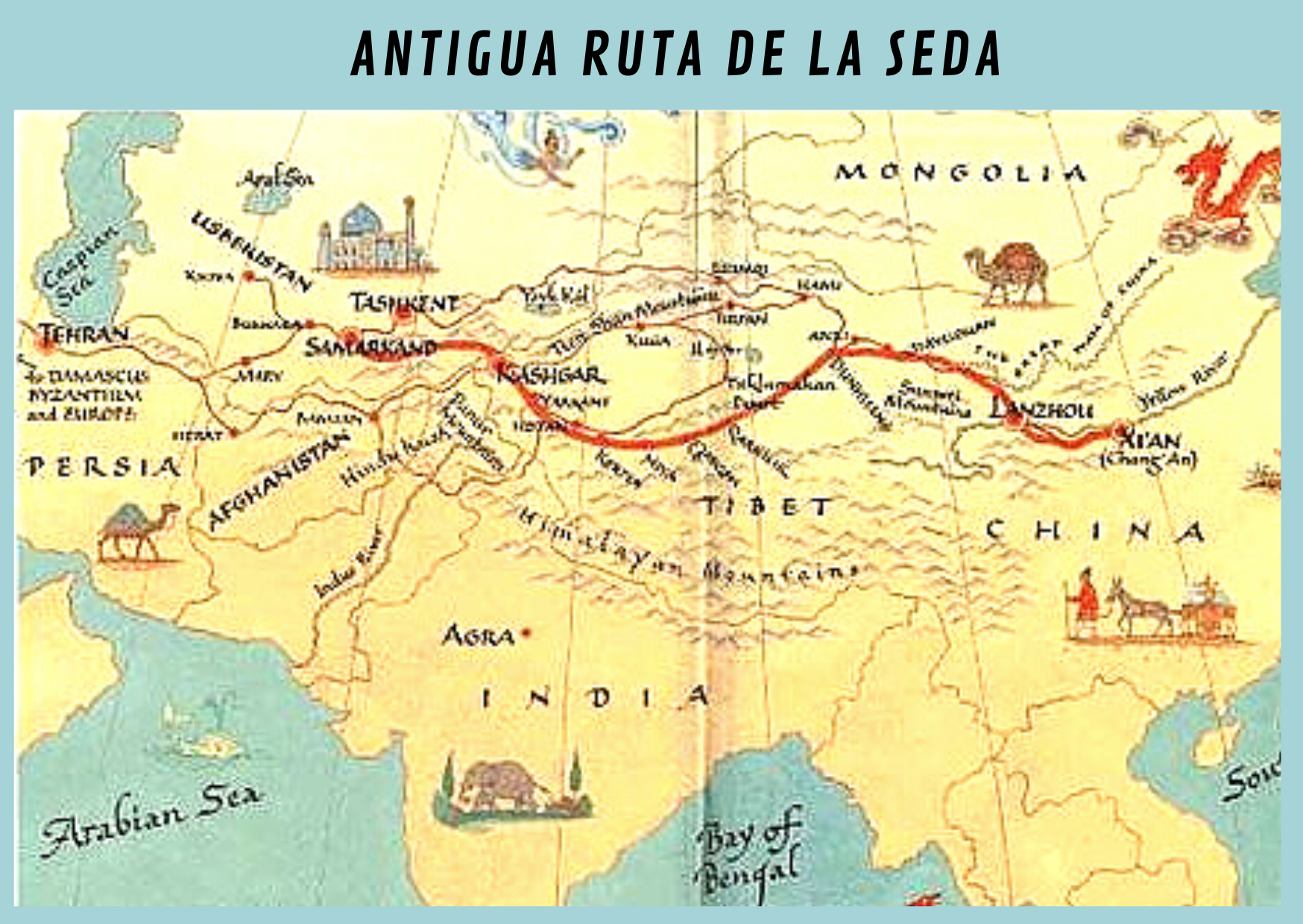 Escaping the middle-income trap. China needed to address its structural challenges with new strategies: introduce new production processes, invest in high-end technology, expand its infrastructure network, balance the population's income, combat inequality, eliminate poverty, stimulate domestic demand and consumption, and fully incorporate its provinces bordering Central Asia into the economic process. At the same time that it needed to undertake all these changes, it also had to create access routes to new markets. The driving idea that needed to be implemented was to move from export-led growth based on cheap labor to a new model based on high productivity and innovation. This new model, in order to create new demand for its products, would also need to favor the economic growth of its less developed trading partners, which are precisely those bordering its most backward areas. The new Silk Road is China's strategic response to escape from the middle-income trap and make the qualitative leap it needs to become a developed economy.
Escaping the middle-income trap. China needed to address its structural challenges with new strategies: introduce new production processes, invest in high-end technology, expand its infrastructure network, balance the population's income, combat inequality, eliminate poverty, stimulate domestic demand and consumption, and fully incorporate its provinces bordering Central Asia into the economic process. At the same time that it needed to undertake all these changes, it also had to create access routes to new markets. The driving idea that needed to be implemented was to move from export-led growth based on cheap labor to a new model based on high productivity and innovation. This new model, in order to create new demand for its products, would also need to favor the economic growth of its less developed trading partners, which are precisely those bordering its most backward areas. The new Silk Road is China's strategic response to escape from the middle-income trap and make the qualitative leap it needs to become a developed economy.
The Thucydides Trap. The Thucydides Trap is a socio-political construct that implies aggressive reactions when dominant countries see the rise of weaker countries whose progress is perceived as threatening to their dominance. The concept was coined by political scientist Graham Allison to point out the danger of a warlike confrontation between the United States and China. Allison refers to the experience of ancient Greece, as explained by Thucydides, a 5th century B.C. Athenian historian, in his History of the Peloponnesian War between Athens and Sparta. Thucydides tells how Sparta, the dominant city-state in ancient Greece, viewed with suspicion the growing economic power of Athens. To guard against Athens becoming stronger, Sparta unleashed provocations until Athens fell into the trap of going into war with Sparta. As a result of that war, both cities fell into decline. As a historical sequel, that war put an end to Greek preeminence in Western history and opened space for the rise of Rome.
Hence the concept of "trap" because it points to the tendency to military conflict when one dominant country "considers" the economic growth of another as a threat to its hegemony. It is "entrapment" because confrontation usually ends badly for all parties. Hence the importance of avoiding clash "pre-emptively" and seeking diplomatic resolution of such conflicts. (Destined for War: ¿Can America and China Escape Thucydides’s Trap? By Graham Allison Houghton Mifflin Harcourt, 2017).
China in Thucydides' Trap. China's gradual but steady progress brought about a change in its relationship with the world. The 2008 financial crisis revealed the importance of China in global economic stability. It also taught China the relative fragility of its own growth fundamentals. Although there is not the slightest historical tradition of territorial aggression on China's part in 3000 years of its history, China's gigantic growth began to be viewed with suspicion. Despite the fact that all the wars in which China has been involved have been defensive wars, the mere fact of its enormous and growing power aroused mistrust.
In addition, there was another shift in international power relations. The gravitation of the world economy shifted from the dominant Atlantic to the Pacific. Some authors point to this shift as the third major turning point in the last 500 years of history. The first shift was the rise of Western Europe in the 15th century, which was consolidated with the Industrial Revolution in the 19th century. The second was the rise of the United States from the beginning of the 20th century to become today's hegemonic world power. The Financial Times (Valentina Romei and John Reed. Financial Times, MARCH 25 2019. At: https://www.ft.com/content/520cb6f6-2958-11e9-a5ab-ff8ef2b976c7) points to 2020 as the beginning of Asia's century. It is based on the fact that, as of that date, Asia Pacific GDP is already greater than the summed GDP of the rest of the world. In this scenario, China's growth is the dominating factor.
China's growth has triggered apprehension in the United States. Since the Obama administration China is considered a strategic rival. This fits the model of the suspicious reaction of a hegemonic power to a rising force. If these misgivings are also coupled with the history of U.S. military interventions at the slightest sign of threat, the growing rivalry with China acquires potential confrontational overtones. Allison refers to it as unavoidable historical preconception. China understands this. It also knows its necessity of avoiding a direct confrontation which would halt its progress and have unthinkable consequences for the human race.
Escaping the Thucydides Trap. The New Silk Road initiative, with its set of international relations actions, is a soft power strategy, without ideological conditions and based on the "win-win" principle. This should also be understood as part of a non-confrontational Chinese effort on its way to international preeminence. Considered as the construction of a gigantic fabric of cooperative relations, based on collective benefit, it goes beyond military alliances and serves as a buffer against international tensions, in a structural effort to avoid falling into Thucydides' trap.
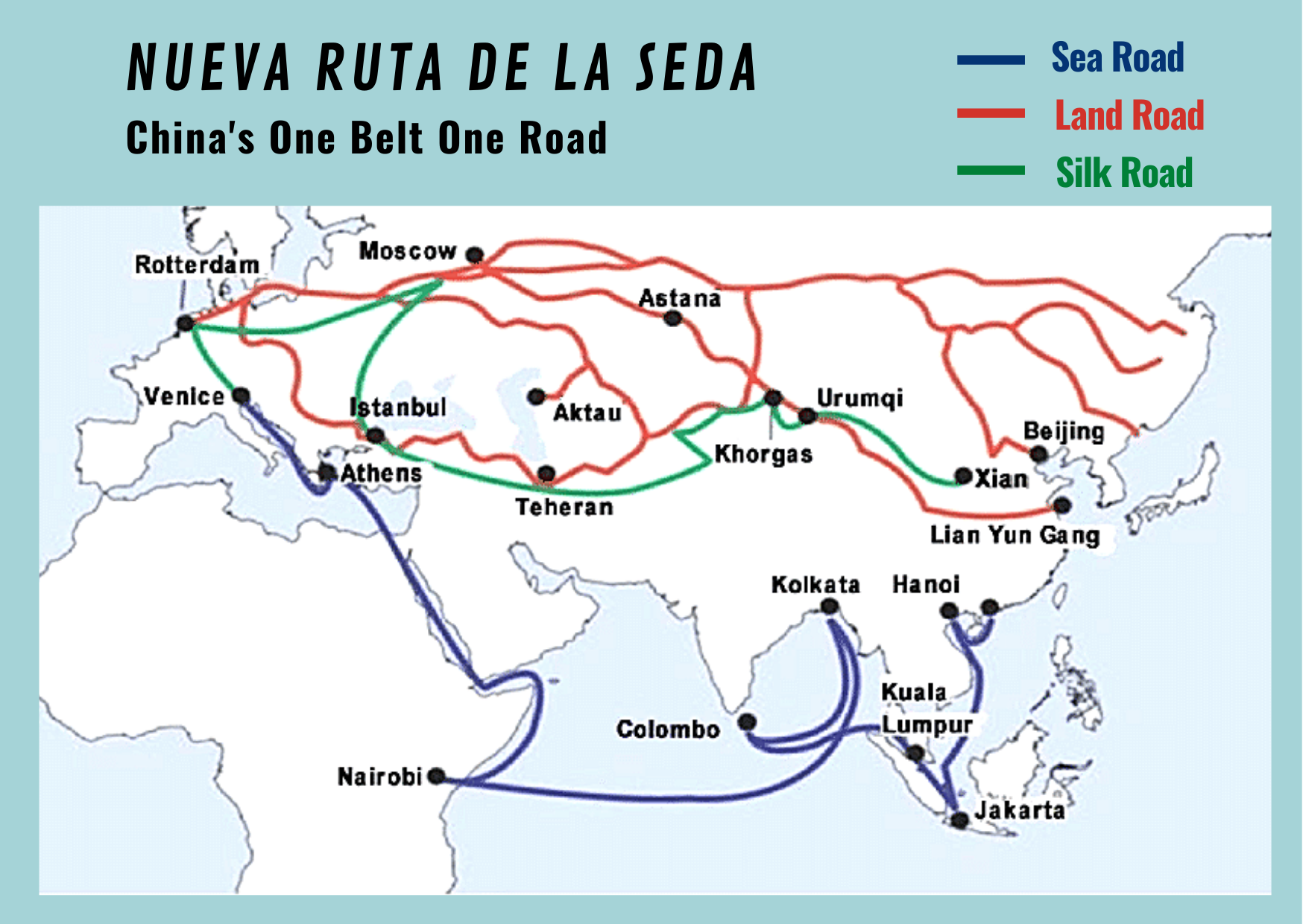 Problems to which China's New Silk Road strategy responds. Between 1949 and 1978, under the leadership of Mao Tse Tung, China consolidated its full independence, after 400 years of commercial onslaughts, foreign aggressions and military occupations. This full autonomy was consolidated into a system of virtual autarchy. In December 1978, under the leadership of Deng Xiaoping, China made a political turnaround that was called "socialism with Chinese characteristics", a program of economic reforms to transform the country into a socialist market economy, open to the world. In 2001, China joined the World Trade Organization and the private sector reached in 2018 the production of more than 60% of GDP. But from 2012 onwards, its economic growth slowed down. With the New Silk Road and under the leadership of Xin Jinping, China takes a new turn at the same time strategic and paradigmatic.
Problems to which China's New Silk Road strategy responds. Between 1949 and 1978, under the leadership of Mao Tse Tung, China consolidated its full independence, after 400 years of commercial onslaughts, foreign aggressions and military occupations. This full autonomy was consolidated into a system of virtual autarchy. In December 1978, under the leadership of Deng Xiaoping, China made a political turnaround that was called "socialism with Chinese characteristics", a program of economic reforms to transform the country into a socialist market economy, open to the world. In 2001, China joined the World Trade Organization and the private sector reached in 2018 the production of more than 60% of GDP. But from 2012 onwards, its economic growth slowed down. With the New Silk Road and under the leadership of Xin Jinping, China takes a new turn at the same time strategic and paradigmatic.
Since 2012, the leadership of the Communist Party of the People's Republic of China realized the limits of the development model followed since the 1980s. The growth rates of its export-oriented economy, which up to that point had been based on the attractiveness of its abundant labor-intensive workforce for Foreign Direct Investment (FDI) by multinationals in search of efficiency, had begun to slow down. In order to continue growing and asserting its position in the world, this slowdown in the pace of growth meant that China needed a paradigm shift. It needed to dispose of a large amount of excess capacity, reorient its internal and external economy towards consumption and services, and develop its own industry based on high technology and innovation. It also needed a harmonious development by putting to good use all the potentials of its territory.
The imbalance between the coastal and inland provinces was another obstacle to that purpose. Territorial gaps posed problems for social and political stability in ethnically diverse territories and with the aggravating factor of separatist Muslim sectors. This combination of problems occurred at the same time that China's own rise was raising geopolitical suspicions. China needed to mark a positive change in its relationship with the world, starting with its immediate Asian environment.
What is the New Silk Road? The New Silk Road is a broad and all-encompassing initiative of the People's Republic of China. It is a public policy of complex and multisectoral interweaving, with global geographic application, and with a character of progressive development, revision and improvement. In its evolution, it has received various denominations. In its first statement, in 2013, it was born as an initiative that renews the old Silk Road, i.e. New Silk Road (we will be using this concept). Then, in Chinese deliberations and documents, it began to be referred to as the Belt and Road Initiative. In its first, more refined strategic elaboration, it was indistinctly called, in English, Belt and Road Initiative (BRI) or "One Belt, One Road" (OBOR).
In terms of its financial dimensions, its geographic scope and its strategic positioning within China, it is the most monumental megaproject of modern times.
Financial dimension. A total investment of four trillion dollars is estimated. Of this sum, China would contribute one trillion dollars. Compared to the Marshall Plan, at current prices, China's contribution to the New Silk Road is ten times greater than the US aid to European countries after World War II. But while the Marshall Plan followed the logic of the Cold War, which was to strengthen countries ideologically aligned as opposed to the socialist bloc and the Soviet Union, the New Silk Road is neither ideologically conditioned nor does it create politically aligned blocs. Nor is it a grant program, but a loan program, with Chinese financing instruments, its "policy banks", strategic public banks such as the Export-Import Bank of China and the China Development Bank. Multilateral financial institutions directly linked to the project have also been created, such as the Silk Road Fund or the New BRICS Development Bank to which is added the Asian Infrastructure Investment Bank (AIIB), created at the initiative of the People's Republic of China, in 2016. From 57 founding member countries, its membership has risen to 105 countries. The Bank has approved loans for 163 projects amounting to US $32.82 billion. Its initial motto: "lean, clean and green" speaks of streamlining operations, fighting corruption and prioritizing environmental projects. Its new motto "i4t" (Infrastucture for tomorrow) signals the priority of financing green infrastructure with sustainability, innovation and connectivity criteria.
Strategic positioning within China. The whole of China is involved in the initiative, from the central government to local authorities. State-owned and private sector companies are incorporated in its development programs. Universities are taking on responsibilities in exchange and scholarship programs, as well as in research projects. The media is fully involved in all aspects of its follow-up. The climax of its strategic positioning came on October 24, 2017, on that day at its 19th National Congress, the Chinese Communist Party agreed to amend its Statutes to include the concept of "following the principle of achieving shared growth through discussion and collaboration, and promoting the Belt and Road Initiative." The New Silk Road thus became, beyond a particular state policy, a decisive turning point. This statutory incorporation, that is, mandatory as a transcendent State policy, is only matched by the incorporation of Deng Xiao Ping's reform and opening-up policy, in December 1978, in the party statutes, when the economic reform program "socialism with Chinese characteristics", defined as an open socialist and market economy, was launched.
Operational axes of the geopolitical scenarios:
- it starts from an extensive consultation, both within China in the regional political leaderships most concerned with each phase and with the partners of each scenario of implementation.
- Joint contribution in establishing the active participation of the national partners in each case.
- Shared benefits, determining concrete advantages for each participant.
It comprises five areas of intervention:
- development of shared policy initiatives: e.g. climate change, poverty alleviation, urban improvement, clean energy, etc.
- Infrastructure developments: roads, railroads, ports, bridges, etc.
- Promotion and facilitation of trade, improvement of mutual conditions of exchange, multiplication of the involvement of actors in value chains.
- Broad financial support through the establishment of international banking institutions to support joint cooperation initiatives, and
- Improving the connectivity of countries, companies and individuals, with a broad component of socio-cultural and information exchanges.
Chronology of its definitions and implementation
September 2013: first presentation of the "New Silk Road" project. President Xi Jinping made the first outline of China's new strategic vision during his visit to the Central Asian countries bordering China - Turkmenistan, Kazakhstan, Uzbekistan and Kyrgyzstan.
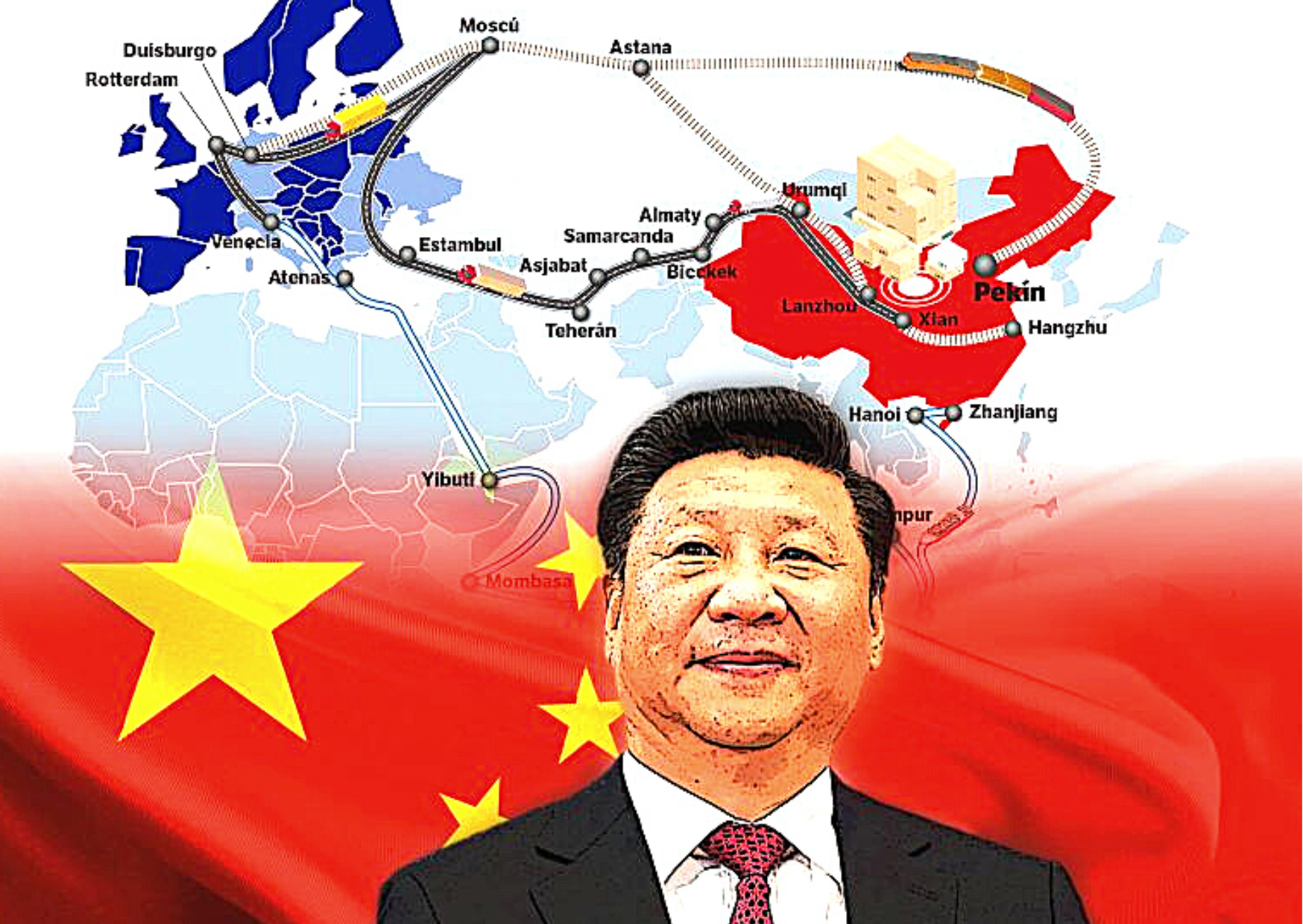 At the time of launching the New Silk Road initiative, Xi Jinping was visiting Kazakhstan, on China's northeastern border. This Islamic republic borders the Chinese provinces of Qinghai and Gansu, located off the usual Chinese trade accesses, which lie on its coasts. Both these Chinese provinces and Kazakhstan itself have major infrastructure development problems connecting them to international trade.
At the time of launching the New Silk Road initiative, Xi Jinping was visiting Kazakhstan, on China's northeastern border. This Islamic republic borders the Chinese provinces of Qinghai and Gansu, located off the usual Chinese trade accesses, which lie on its coasts. Both these Chinese provinces and Kazakhstan itself have major infrastructure development problems connecting them to international trade.
It is also worth remembering that this region had its greatest boom in ancient times, as a point of entry to China from the network of trade routes through which trade with Europe took place. It lasted 1600 years, until the fall of Constantinople, and became known as the Silk Road. Nothing more appropriate, that Astana, the capital of Kazakhstan, was where China's major strategic initiative was launched.
Xi Jinping said there, "To forge closer economic ties, deepen cooperation and expand space for the development of the Eurasia region, we must take an innovative approach and join efforts to build an economic belt along the Silk Road. We can start by working on individual areas and link them together later to cover the entire region." In that way, the New Silk Road initiative was initially born to improve the economic development conditions of both its provinces furthest from its shores and the countries most detached from world trade. ("Xi proposes a 'new Silk Road' with Central Asia," China Daily, 8 September 2013) https://usa.chinadaily.com.cn/china/2013-09/08/content_16952304.htm
For its neighbors, the offer of its economic integration with China to the south and into Europe to the west was an attractive growth prospect. For China, in addition to improving its reach to energy sources, it is conducive to the economic development of its western provinces (Xinjiang and Tibet) and creates new markets to boost its exports. In this way, the "win-win" idea, a model put forward by Xi Jinping, is materialized.
October 2013. New Maritime Silk Road: expanding the strategy. On the occasion of the Association of Southeast Asian Nations (ASEAN) meeting in Jakarta, President Xi outlined an expansion of his concept of the New Silk Road. In what was the first address by a foreign leader to the Indonesian Parliament, in addition to proposing the creation of an Asian infrastructure investment bank, President Xi added: "China will strengthen maritime cooperation with ASEAN countries to ... vigorously develop maritime partnership in a joint effort to build the 21st Century Maritime Silk Road." Here, too, Xi Jinping made direct reference to the 2000 years of history that had seen how "since ancient times, Southeast Asia was an important hub of the ancient Maritime Silk Road." (Xi Jinping. 2013. Speech by Chinese President Xi Jinping to Indonesian Parliament. At: http://www.asean-china-center.org/english/2013-10/03/c_133062675.htm).
March 2015. Presentation of New Silk Road strategy and scenarios. Two years after Xi Jinping's announcements, the National Development and Reform Commission, the Ministry of Foreign Affairs, and the Ministry of Commerce presented jointly the strategy and scenarios of the New Silk Road in a report entitled "Vision and Actions on Joint Construction of the Belt and Road." That report detailed the objectives of the project, set out details of its implementation, and enunciated the land and maritime corridors on which the initiative would focus.
May 2017. Digital Silk Road Presentation. Two years after the presentation of the New Silk Road strategy and scenarios, President Xi Jinping took advantage of the framework of the Belt and Road Forum for International Cooperation and presented a new component of the Chinese initiative. Thus, without neglecting its traditional infrastructure objectives, the New Silk Road is being expanded to include the digitization of the economy. Thus, new dimensions emerge that China wants to share with the world, in areas such as artificial intelligence, nanotechnology, Big Data development, smart cities, etc. The objectives for this facet, in addition to completing economic cooperation, seek a new space in the production and communication fabric of the world in which the development and implementation of 5G technology is fundamental and in which China has the world's technological vanguard.
New Silk Road Corridors
Eurasian Land Bridge Economic Corridor
|
|
China-Russia-Mongolia Economic Corridor
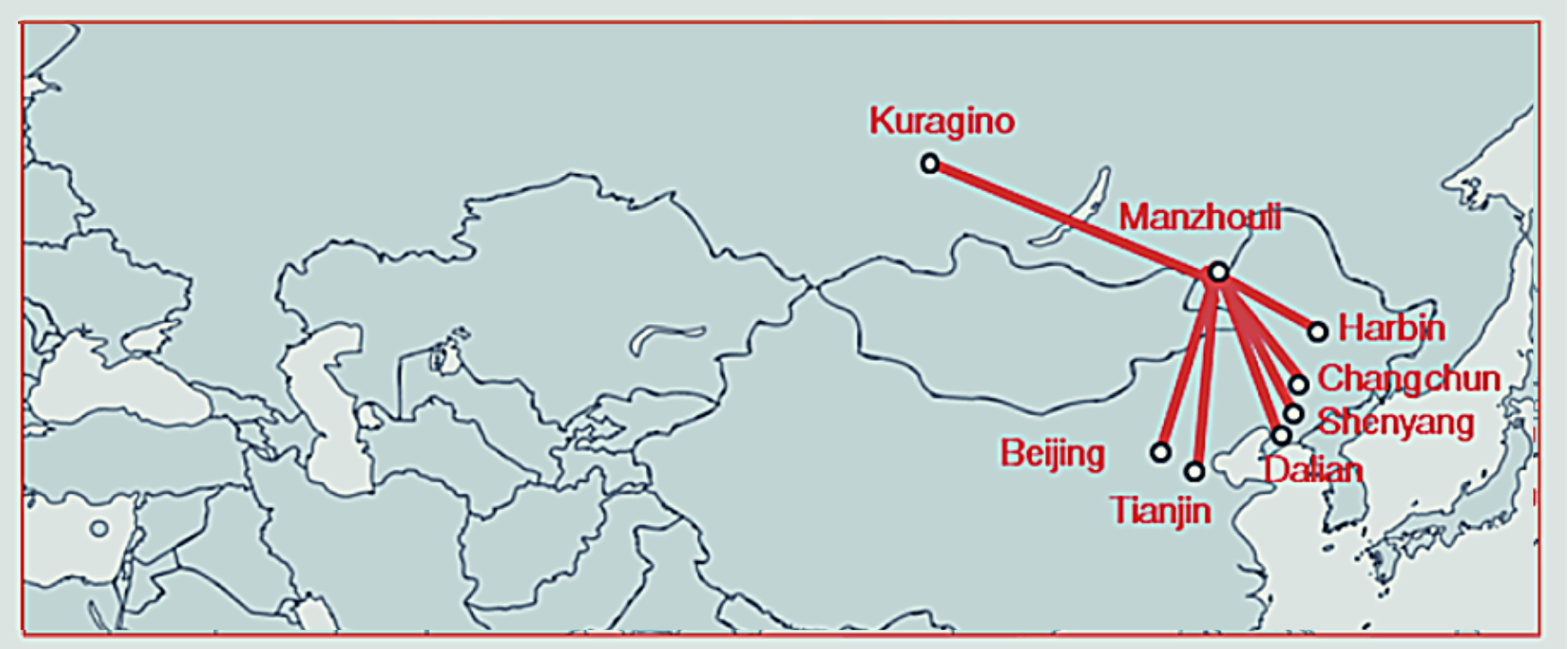 Derived from the excellent bilateral relations between Mongolia, Russia and China, the three countries promote trilateral exchanges aimed at (1) modernizing and expanding roads and railroads among the three states, (2) promoting cross trade exchanges by reducing border procedures and (3) building industrial linkages. In 2015, a Medium-Term Roadmap for the Development of Trilateral Cooperation between China, Russia and Mongolia was drafted. Derived from the excellent bilateral relations between Mongolia, Russia and China, the three countries promote trilateral exchanges aimed at (1) modernizing and expanding roads and railroads among the three states, (2) promoting cross trade exchanges by reducing border procedures and (3) building industrial linkages. In 2015, a Medium-Term Roadmap for the Development of Trilateral Cooperation between China, Russia and Mongolia was drafted. |
China-Central and West Asia Economic Corridor
|
|
China - Indochina Peninsula Economic Corridor
|
|
China-Pakistan Economic Corridor
|
|
China-Bangladesh-India-Myanmar Economic Corridor
|
|
The 21st Century Maritime Silk Road Corridor
|
|
The digital corridor of the New Silk Road
|
|
Permanent reference of historical continuity. It is noteworthy the reference of continuity that the Chinese leadership always maintains with its millennial past and the way in which they link past answers to present problems. Their 2015 "Vision and Actions" state, "More than two millennia ago, the industrious and courageous peoples of Eurasia explored and opened various trade routes and cultural exchanges that linked the major civilizations of Asia, Europe and Africa, collectively referred to by later generations as the Silk Road. ...For thousands of years, the spirit of the Silk Road - "peace and cooperation, openness and inclusiveness, mutual learning and mutual benefit".... Symbolizing communication and cooperation between East and West, the spirit of the Silk Road is a historical and cultural heritage shared by all countries of the world.... In the 21st century, a new era marked by the theme of peace, development, cooperation and mutual benefit, it is even more important that we continue the spirit of the Silk Road in the face of the weak recovery of the world economy and complex international and regional situations."
The strategic thrusts of the New Silk Road frame the continuity of its history of a shared destiny, since ancient times, with its neighboring peoples and trading partners, which requires the building of an intellect of collective benefit to the challenges of the present. It is, as the Chinese president said, a "win-win" and it responds to the concept of solving one's own problems by helping others to solve theirs. Xi Jinping put it by resorting to an old Chinese saying: "The interests to be taken into account must be the interests of all".
In addition to recalling its historic role in the region and beyond, offering initiatives that expand the internal and external networking capabilities of its trading partners creates an undeniable prospect of growth, for all. It empowers its partners with new infrastructure and better connects them not only to China but to the world.
For Beijing, meanwhile, the various corridors provide it with access to resources necessary for its energy security and, in the case of the Eurasian corridor, facilitate the economic development of its western provinces. In each case it expands new markets for its exports and provides an enviable space for the development of its high-end infrastructure industry, such as high-speed railroads, and its growing strength in cutting-edge technology. This links it with the objective of also stimulating the structural transformation of Chinese production. In fact, one of the factors that has led to a decline in both FDI in China and demand for its manufacturing products is the decline in its competitive advantage for cheap labor. This has been a by-product of both the economic improvement of its increasingly demanding population and the growing offer of cheap labor from other Asian countries.
That is why the New Silk Road must be linked to the "Made in China 2025" initiative, the policy that seeks to break the previous paradigm and bet on quality and technological innovation. With a projected investment of 300 billion dollars, the "Made in China 2025" plan seeks to change China's production model and move from competing on quantity to competing on quality. This means increasing its participation in global value chains. The goal is to have 70% domestic content in high-tech products by 2025. Currently it is only 40%. It is a plan to improve the manufacturing capacity of China's most technology-intensive industries, which are competitive with the most advanced countries in the world.
Readings consulted:
- Domínguez y Caria (Domínguez, Rafael; Caria, Sara (2016). «Ecuador en la trampa de la renta media». Problemas del Desarrollo 47 (187): 89-112.)
https://www.elsevier.es/es-revista-problemas-del-desarrollo-revista-latinoamericana-86-articulo-ecuador-en-la-trampa-de-S0301703616300396 - La Ruta de la Seda y la «Nueva Era» de la República Popular China: fundamentos, objetivos, implicaciones.https://www.idee.ceu.es/Portals/0/Libros/Capitulo%20I_%20La%20Ruta%20de%20la%20Seda%20y%20la%20nueva%20Era%20de%20la%
20Republica%20Popular%20China_%20Fundamentos%2C%20objetivos%20e%20implicaciones_%20Fernando%20Delage.pdf - 2018. La Nueva Ruta De La Seda: Implementación e Impacto Euroasiático. https://repositorio.comillas.edu/rest/bitstreams/145588/retrieve
- 2017. Full Text: Vision and actions on jointly building Belt and Road. http://2017.beltandroadforum.org/english/n100/2017/0410/c22-45-5.html
- 2013. Xi Jinping. Speech by Chinese President Xi Jinping to Indonesian Parliament.
http://www.asean-china-center.org/english/2013-10/03/c_133062675.htm - 2018. Ruta de la seda. Nuevas alianzas para la participación de América Latina. https://www.redalyc.org/journal/290/29058775002/html/
- 2020. Impacto en las Relaciones entre la Unión Europea y China. https://repositorio.uam.es/bitstream/handle/10486/692225/ruiz_aznar_ana_tfg.pdf?sequence=1
- 2019. Universidad Nacional de La Plata. Facultad de Ciencias Jurídicas y Sociales. Libro: China: una nueva estrategia geopolítica global:
la iniciativa la Franja y la Ruta. En: https://www.iri.edu.ar/wp-content/uploads/2019/07/libroRutaDeLaSeda2019.pdf - 2022. FLACSO, Costa Rica. Dimensiones de la Diplomacia de China en América Latina y El Caribe. En: https://www.chinacontemporanea.org/_files/ugd/76f779_7d784b365a2f4480b3770f22b28c872f.pdf
- 2021 – Abril 2022. Ministerio de Comercio Exterior. Informe Anual de Labores. Ministerio de Comercio Exterior. -- San José, C.R.: COMEX, 2022. En: https://www.comex.go.cr/media/9379/informe-de-labores-2021-2022-asamblea-legislativa.pdf
- 2022. Embajada de la República Popular China en Costa Rica. Boletín Informativo B.I. 18/2022:
- Nueva obra infraestructural inyecta un nuevo vigor a la cooperación entre China y América Latina.En: http://cr.china-embassy.gov.cn/esp/binfo/index.htm
- 2022. Embajada de la República Popular China en Costa Rica. Boletín Informativo B.I. 17/2022:
Los Planes de China para Promover la Causa de la Paz y el Desarrollo de la Humanidad.En: http://cr.china-embassy.gov.cn/esp/binfo/index.htm - IEEE 38/2020. La Ruta de la Seda Digital: la gran globalización china. Documento de Opinión. En: https://www.ieee.es/Galerias/fichero/docs_opinion/2020/DIEEEO38_2020AGUPAR_sedadigital.pdf

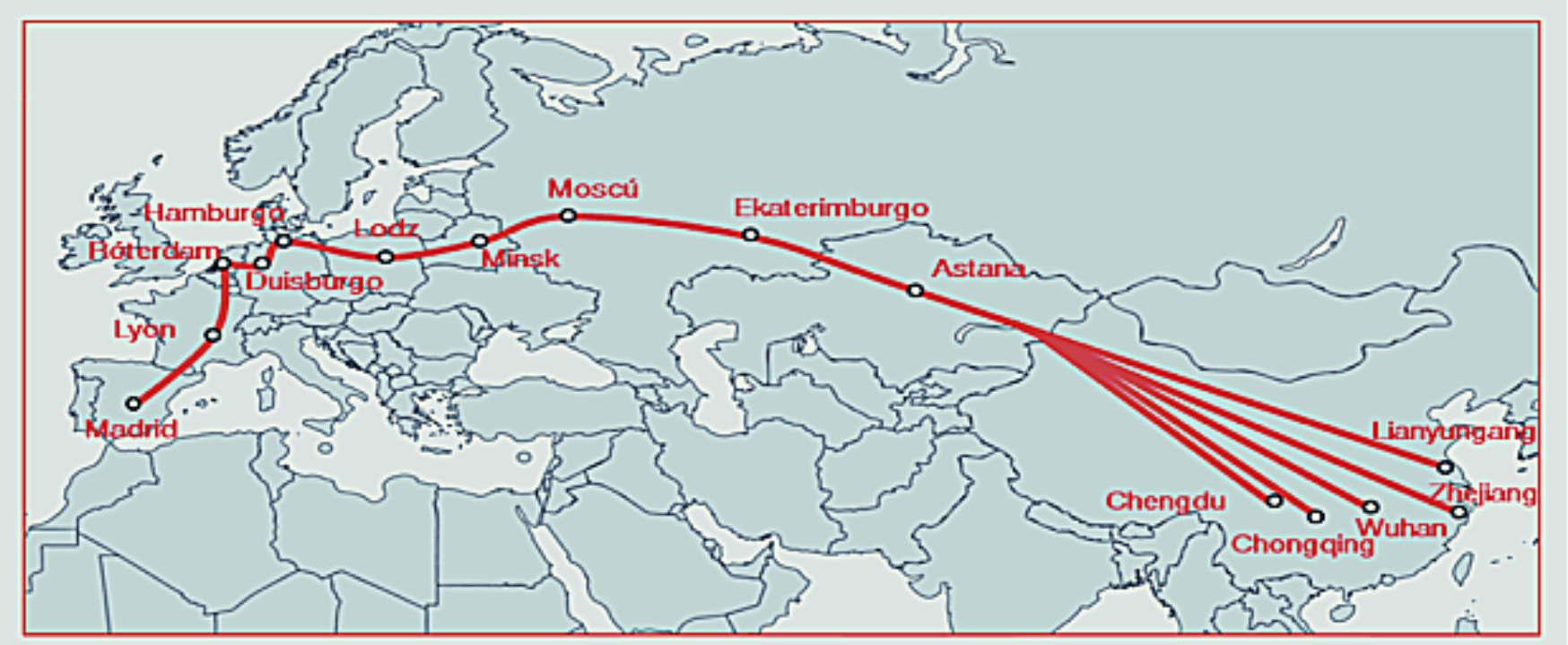 Complex of railway lines connecting the Chinese coastal areas with Europe. Its layout involves large investments and favors economic dynamism both in central and western China, which had not had the same opportunities as their coastal areas. Its route is a program with great implications for progress at all points along the corridor. Its main final destination is Hamburg, Germany, but it has branches connecting other European countries, such as Italy, Poland and Spain. Its trains also connect the Russian and Central Asian steppes.
Complex of railway lines connecting the Chinese coastal areas with Europe. Its layout involves large investments and favors economic dynamism both in central and western China, which had not had the same opportunities as their coastal areas. Its route is a program with great implications for progress at all points along the corridor. Its main final destination is Hamburg, Germany, but it has branches connecting other European countries, such as Italy, Poland and Spain. Its trains also connect the Russian and Central Asian steppes.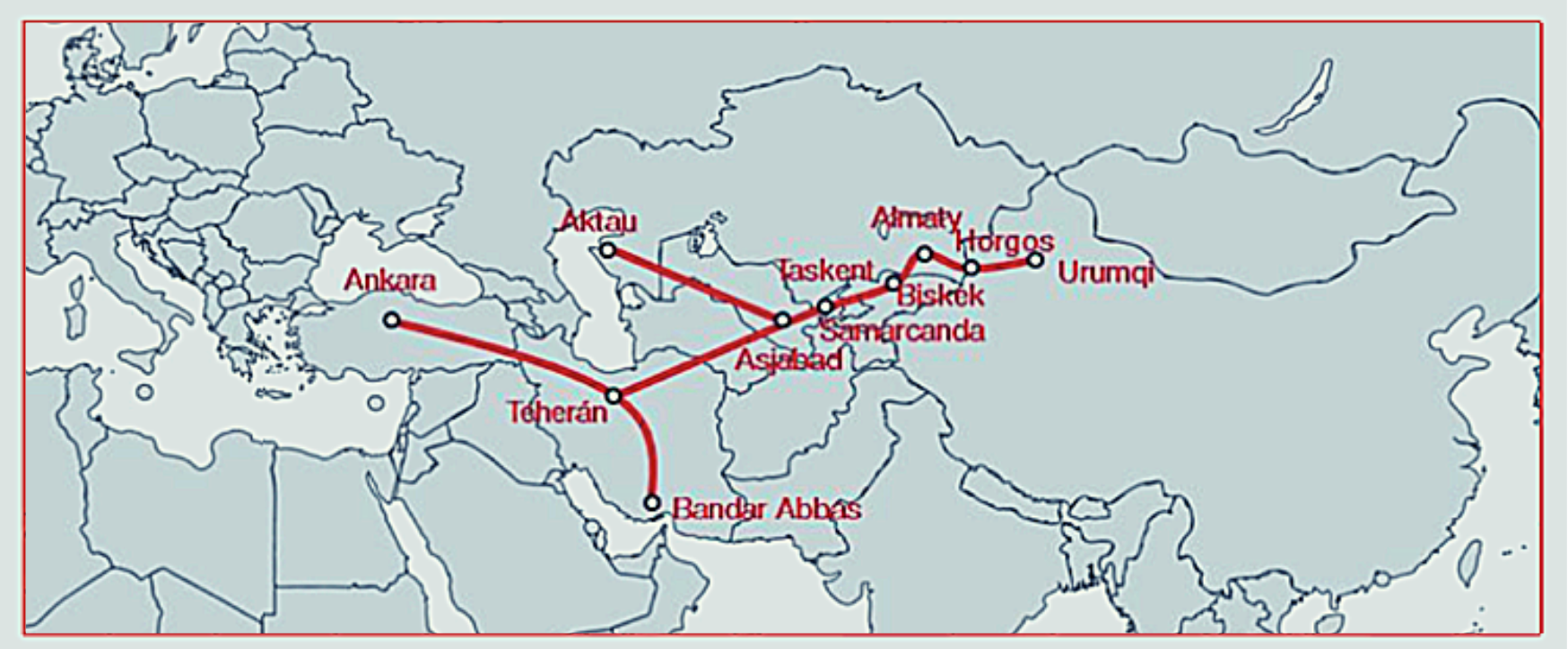 This is one of the most emblematic corridors of Xi Jinping's "win-win" vision. This is a region with no history of large-scale investments, both in its Chinese and Asian sections. It connects China's depressed west with the Central Asian republics and with Iran, Turkey and the Middle East. It is the segment that best revives the ancient Silk Road, linking major traditional regional trading centers such as Samarkand or Xinjiang. In fact, it was the first corridor to be announced in 2013, because Kazakhstan and Uzbekistan are already the most committed countries with national strategies of their own that complement the New Silk Road.
This is one of the most emblematic corridors of Xi Jinping's "win-win" vision. This is a region with no history of large-scale investments, both in its Chinese and Asian sections. It connects China's depressed west with the Central Asian republics and with Iran, Turkey and the Middle East. It is the segment that best revives the ancient Silk Road, linking major traditional regional trading centers such as Samarkand or Xinjiang. In fact, it was the first corridor to be announced in 2013, because Kazakhstan and Uzbekistan are already the most committed countries with national strategies of their own that complement the New Silk Road.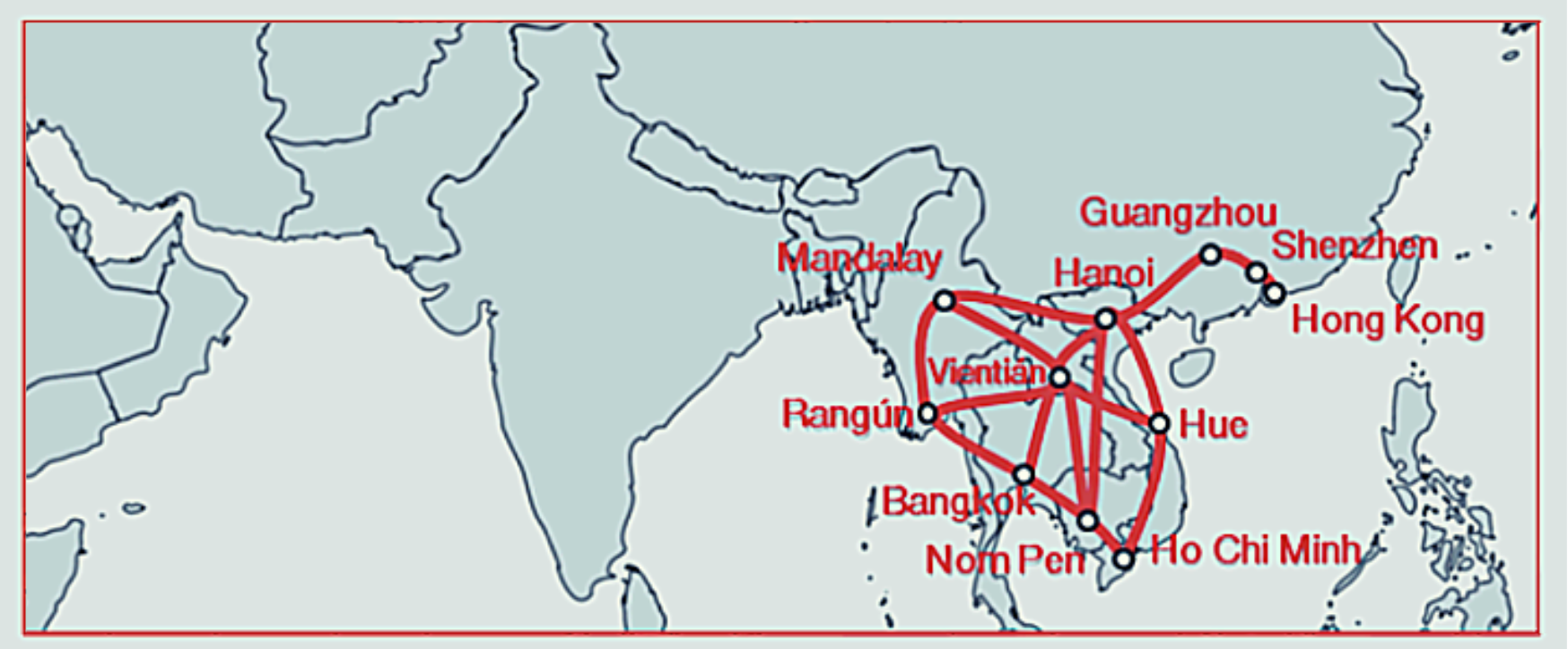 Southeast Asia is a natural area for promoting balanced development, increasingly linked to global value chains. This corridor is emerging as a unique instrument for increasing the GDP of East Asia as a whole. To implement it, transport networks and industrial parks are jointly designed; raising capital funds, involving Singapore and sustainable inter-regional growth committed to the development of the most vulnerable partners.
Southeast Asia is a natural area for promoting balanced development, increasingly linked to global value chains. This corridor is emerging as a unique instrument for increasing the GDP of East Asia as a whole. To implement it, transport networks and industrial parks are jointly designed; raising capital funds, involving Singapore and sustainable inter-regional growth committed to the development of the most vulnerable partners.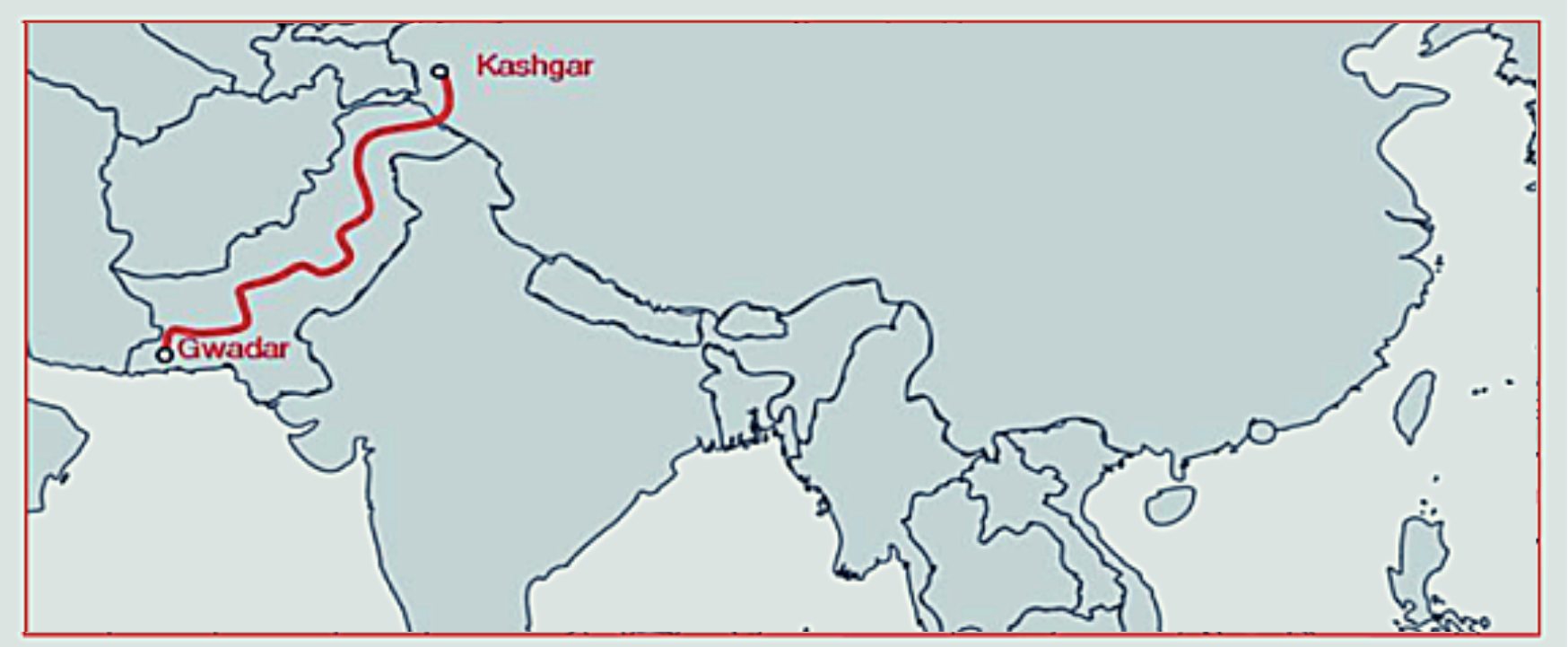 This is the corridor that will involve the largest amount of funds to a single partner, US$46 billion. It has all the investment modalities and is the area where the entire New Silk Road project has made the best progress: railway, airport, maritime and road infrastructures; energy projects for hydroelectric exploitation, supply and transport of fossil fuels; industrial complexes, etc.
This is the corridor that will involve the largest amount of funds to a single partner, US$46 billion. It has all the investment modalities and is the area where the entire New Silk Road project has made the best progress: railway, airport, maritime and road infrastructures; energy projects for hydroelectric exploitation, supply and transport of fossil fuels; industrial complexes, etc.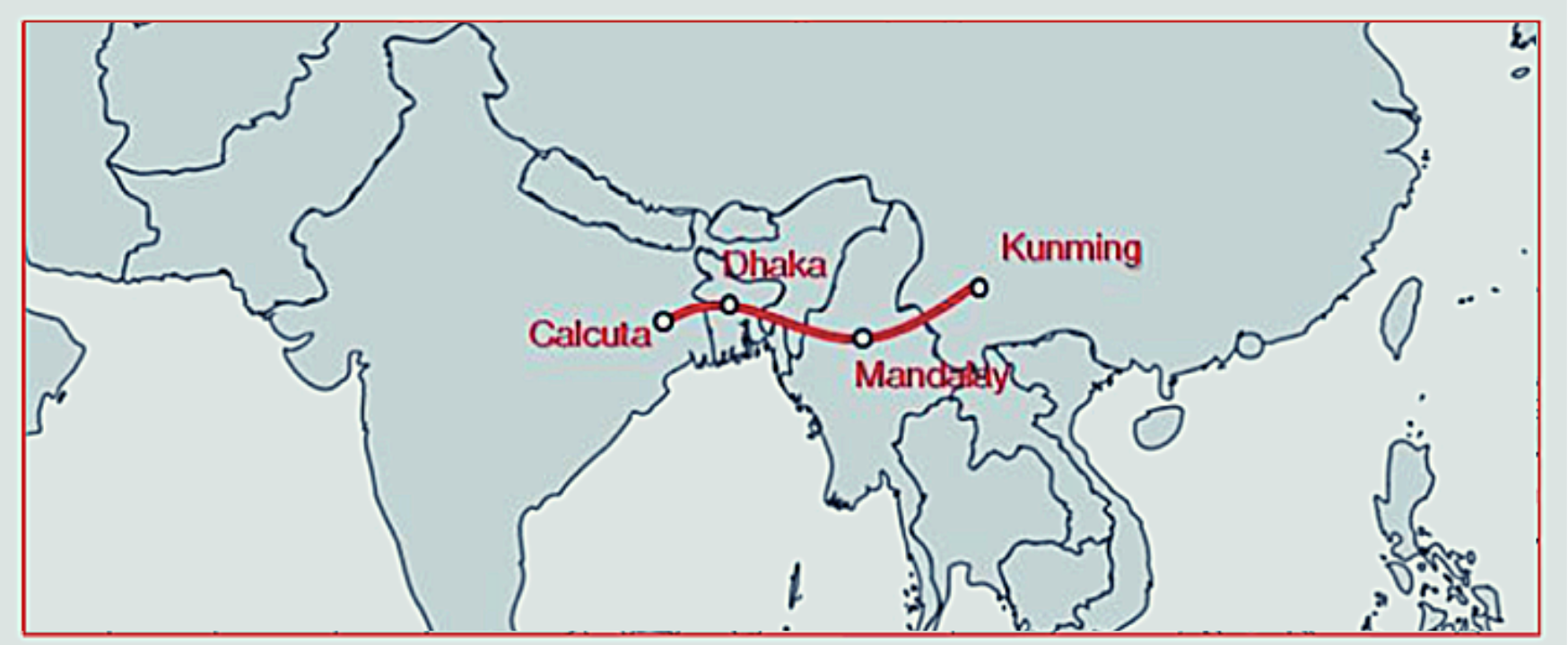 This is the most complex corridor. Its challenges include, on the one hand, a traditional rivalry, even territorial, between China and India and, on the other, the enormous economic weakness and demographic crisis of Bangladesh and the political instability of Myanmar (the former Burma). In addition, China lacks physical access to the Indian Ocean. However, it is a corridor of no lesser importance given its difficulties, since it is decisive for trade logistics, regional tourism and, more importantly, the strengthening of a regional security network.
This is the most complex corridor. Its challenges include, on the one hand, a traditional rivalry, even territorial, between China and India and, on the other, the enormous economic weakness and demographic crisis of Bangladesh and the political instability of Myanmar (the former Burma). In addition, China lacks physical access to the Indian Ocean. However, it is a corridor of no lesser importance given its difficulties, since it is decisive for trade logistics, regional tourism and, more importantly, the strengthening of a regional security network.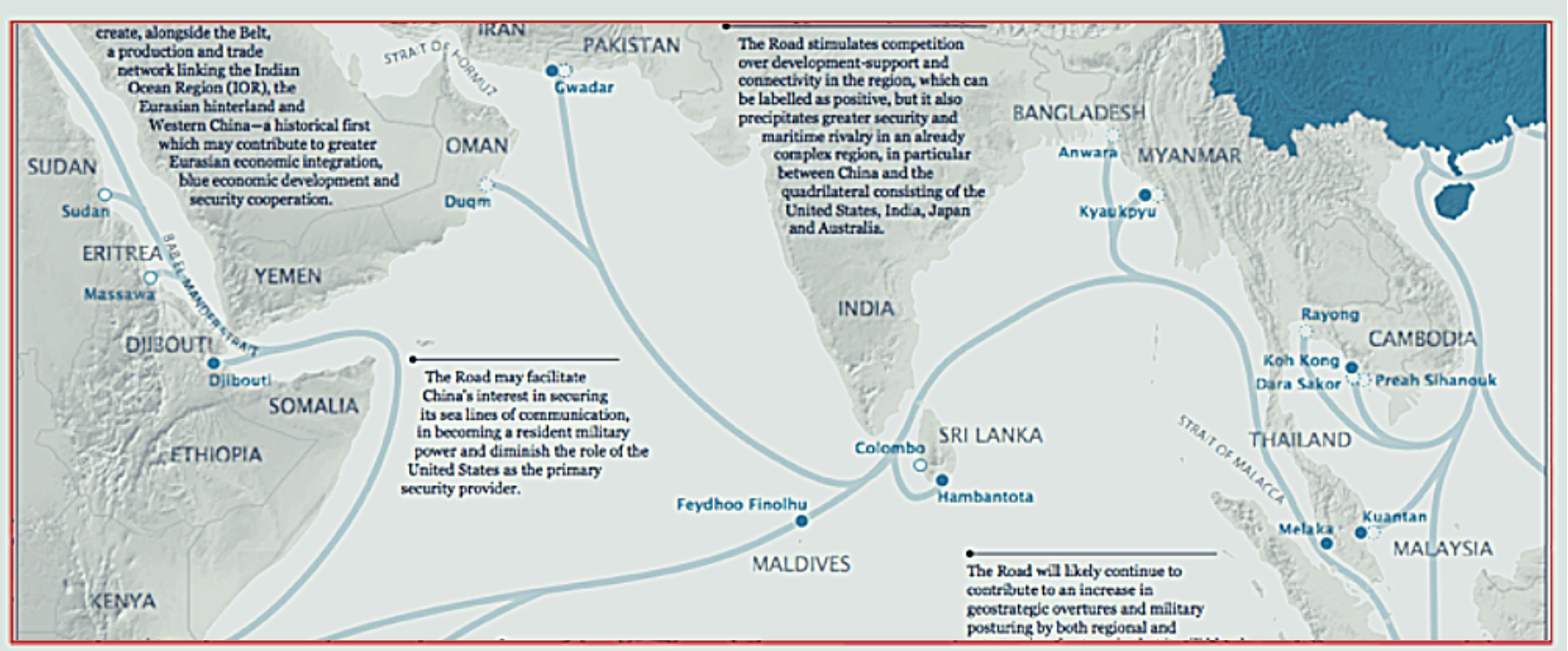 Ninety percent of international trade moves by sea and China is the world's largest exporter and second largest importer. Moreover, China has the largest maritime fleet and owns 6 of the 10 largest ports in the world: Shanghai, Shenzhen, Ningbo-Zhoushan, Guangzhou, Hong Kong and Quingdao. However, trade occupies a decreasing share of its GDP. According to the World Bank, China went from 60% of its GDP from trade in 2006 to only 37% in 2021. This is obviously one of the impacts of the middle-income trap. It follows that the transformation of the maritime component needs to be important. The New Silk Road maritime corridor starts from the China Sea and moves on all the world's maritime routes, connecting China with an immense battery of investments in Africa, Europe, Asia and America. It finances storage infrastructures, port terminals and commercial enclaves such as Gwadar, Colombo, Djibouti and the Port of Piraeus in Greece, the second largest in the Mediterranean. Its most emblematic project in the Americas is a second canal in Panama and a dry canal with a high-speed rail route.
Ninety percent of international trade moves by sea and China is the world's largest exporter and second largest importer. Moreover, China has the largest maritime fleet and owns 6 of the 10 largest ports in the world: Shanghai, Shenzhen, Ningbo-Zhoushan, Guangzhou, Hong Kong and Quingdao. However, trade occupies a decreasing share of its GDP. According to the World Bank, China went from 60% of its GDP from trade in 2006 to only 37% in 2021. This is obviously one of the impacts of the middle-income trap. It follows that the transformation of the maritime component needs to be important. The New Silk Road maritime corridor starts from the China Sea and moves on all the world's maritime routes, connecting China with an immense battery of investments in Africa, Europe, Asia and America. It finances storage infrastructures, port terminals and commercial enclaves such as Gwadar, Colombo, Djibouti and the Port of Piraeus in Greece, the second largest in the Mediterranean. Its most emblematic project in the Americas is a second canal in Panama and a dry canal with a high-speed rail route.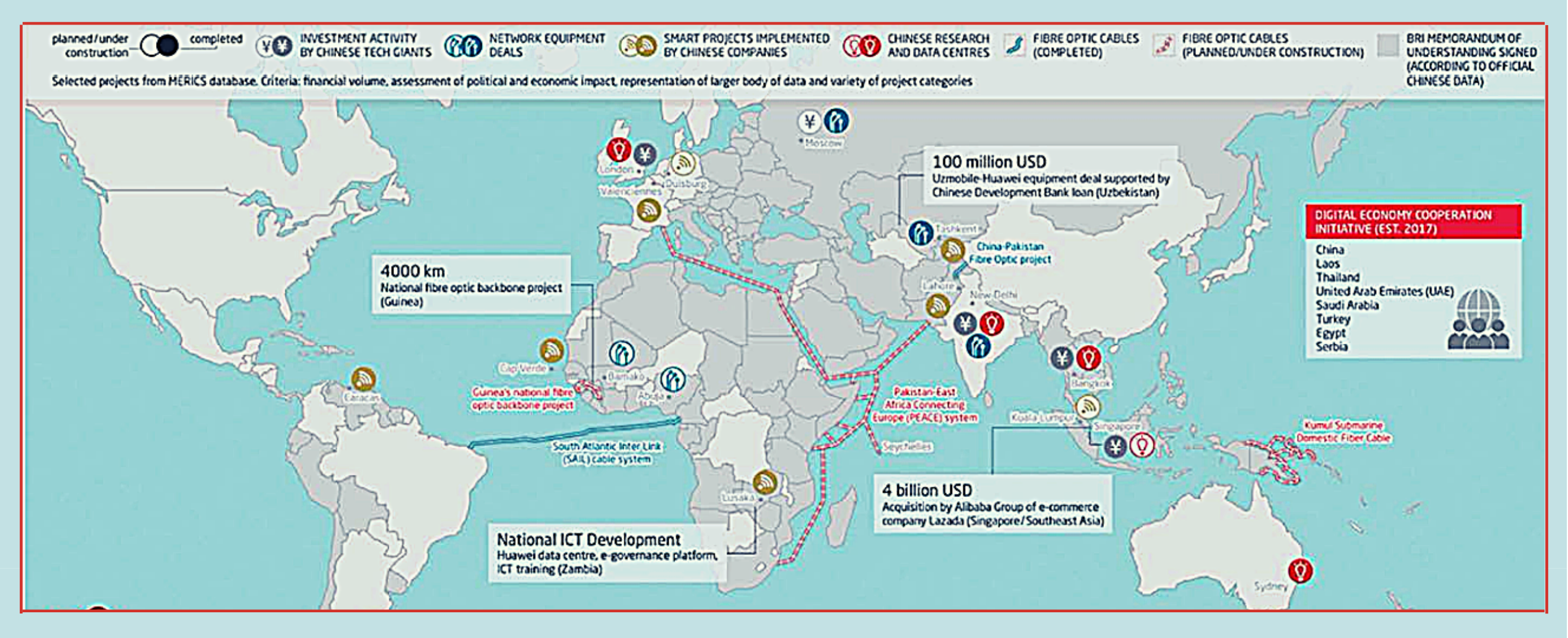 China is adopting a new paradigm for its relationship with the world, which is no longer limited to the exchange of goods, but instead is focused on achieving technological leadership. This is a decisive structural response to counteract the economic slowdown and the middle-income trap. With it, the Asian country's economic projection enters into a transition towards new forms of production compatible with the fourth industrial revolution. In other words, China's development model now includes digital production, which requires technological infrastructure for the proper functioning of new forms of business. The Digital Silk Road (DSR) is composed of a series of projects aimed at strengthening digital trade, technological infrastructure and interconnectivity among the countries that adhere to the New Silk Road Initiative. It is a process that is advancing rapidly. Huawei Marine Networks installed 6,000 km of fiber optic cables between Cameroon and Brazil. The initiative also includes 5G networks, smart city projects, data and research centers, e-commerce agreements and payments with mobile devices. In this process, Chinese technology giants - Alibaba, Tencent, Huawei and ZTE, among others - are entering to compete in the Fourth Industrial Revolution within their own space.
China is adopting a new paradigm for its relationship with the world, which is no longer limited to the exchange of goods, but instead is focused on achieving technological leadership. This is a decisive structural response to counteract the economic slowdown and the middle-income trap. With it, the Asian country's economic projection enters into a transition towards new forms of production compatible with the fourth industrial revolution. In other words, China's development model now includes digital production, which requires technological infrastructure for the proper functioning of new forms of business. The Digital Silk Road (DSR) is composed of a series of projects aimed at strengthening digital trade, technological infrastructure and interconnectivity among the countries that adhere to the New Silk Road Initiative. It is a process that is advancing rapidly. Huawei Marine Networks installed 6,000 km of fiber optic cables between Cameroon and Brazil. The initiative also includes 5G networks, smart city projects, data and research centers, e-commerce agreements and payments with mobile devices. In this process, Chinese technology giants - Alibaba, Tencent, Huawei and ZTE, among others - are entering to compete in the Fourth Industrial Revolution within their own space.